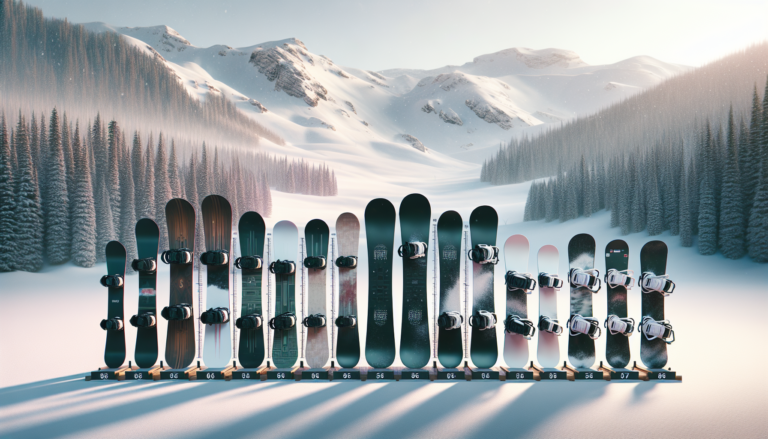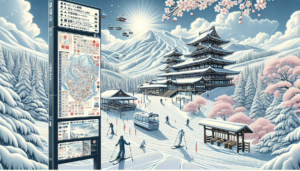Why Snowboard Size Matters
Choosing the right snowboard size is crucial for optimal performance on the slopes. The length and width of your board directly impact its stability, control, and overall ride quality. Getting the wrong size can hinder your progress and make snowboarding less enjoyable, while the perfect fit enhances your experience and helps you advance your skills.
Impact on Stability and Control
A snowboard that is too short or narrow for your height and weight will feel unstable, especially at higher speeds. You may find it difficult to maintain an edge and carve smoothly on turns. Conversely, an oversized board can be hard to maneuver and control, particularly in tighter spaces or when performing tricks.
The right size provides a balanced platform that supports your weight evenly and allows you to apply pressure effectively for superior edge control. This stability is essential for maintaining proper form, absorbing bumps, and handling varied terrain with confidence.
Influence on Speed and Maneuverability
Snowboard length also affects your speed potential and agility on the mountain. Longer boards generally offer better stability at high velocities and float more easily in powder. However, they can be slower edge to edge and more challenging to turn quickly.
Shorter boards excel at maneuverability, allowing for tighter turns and snappier response. They are often preferred by freestyle riders who prioritize quick rotations and park features over top speed. Finding the sweet spot for your riding style lets you optimize both straight-line speed and nimble handling.
Factors to Consider When Choosing Snowboard Size
Several key factors come into play when selecting the ideal snowboard size. While general size charts provide a solid starting point, it’s important to consider your individual physical characteristics, boot size, and riding preferences for the best possible fit.
Rider’s Weight and Height
Your body weight is the primary determining factor for snowboard length. Heavier riders place more force on the board and therefore require a longer size to achieve proper flex and avoid overloading the board. Lighter riders can go with slightly shorter boards.
Height also plays a role, as a board that is drastically taller or shorter than the rider can impact stance and control. Most size charts recommend a length that comes up somewhere between your chin and nose when standing the board on end.
| Rider Weight (lbs) | Recommended Board Length (cm) |
|---|---|
| 100-120 | 135-145 |
| 120-140 | 140-150 |
| 140-160 | 145-155 |
| 160-180 | 150-160 |
| 180-200+ | 155-165+ |
Boot Size and Width
The width of your snowboard should correspond to your boot size to ensure proper fit and leverage over the edges. If the board is too narrow, your boots will overhang and catch in the snow during turns. A board that is too wide will be less responsive and harder to transition between edges.
Aim for a width that allows your boots to hang over the edge slightly but not more than an inch on each side. Riders with very large feet (size 11+) may need to look for wide-specific models to get an appropriate fit.
Riding Style and Terrain
Your riding style and preferred terrain should heavily influence your snowboard size and shape. All-mountain riders who like to explore the entire resort can benefit from a versatile, mid-length board that handles a variety of conditions well. Freestyle riders may size down slightly for more maneuverability in the park.
Freeriders who spend most of their time off-piste and in powder may opt for a longer, directional board with a tapered shape and set-back stance. This provides better float and straight-line stability for high speeds and deep snow. Consider where and how you ride most often when narrowing down board options.
Types of Snowboards and Their Sizes
Different styles of snowboards are designed for specific purposes and terrain, and sizing can vary accordingly. Here is an overview of the main snowboard categories and their typical size ranges:
All-Mountain Snowboards
All-mountain boards are the most versatile and a great choice for riders who like to explore the whole mountain. They perform well on groomed runs, in powder, and even in the park. An all-mountain board should be ridden at a length that is roughly equal to your height, give or take a few centimeters based on weight.
- Ideal for resort riding on varied terrain
- Balanced flex and shape for all-around performance
- Size to rider height for a versatile fit
Freestyle Snowboards
Freestyle boards are built for riders who spend a lot of time in the terrain park or like to ride switch and perform tricks all over the mountain. They are typically a bit shorter than all-mountain boards for increased maneuverability and often feature a true twin shape that rides the same forward and backward.
- Designed for park riding and tricks
- Soft to medium flex for playfulness
- Size 2-6cm shorter than rider height
Freeride Snowboards
Freeride boards excel in challenging off-piste terrain and deep powder snow. They usually have a directional shape with a longer nose than tail for better float and speed control. Freeride boards can be sized a bit longer to enhance stability at high velocity.
- Built for powder and aggressive all-mountain riding
- Stiffer flex and tapered shape for responsive turns
- Size 2-6cm longer than rider height
Splitboards
Splitboards are designed for backcountry snowboarding and can be separated into two halves for uphill skinning. They are generally stiffer and heavier than regular snowboards to provide a stable platform on variable snow. Splitboard sizing is similar to freeride boards, with a bit of extra length for improved flotation in deep snow.
- Designed for backcountry touring
- Splits into two pieces for climbing and descents
- Size 4-8cm longer than rider height
Snowboard Size Recommendations for Different Skill Levels
Your snowboarding ability and experience level also impact your ideal board size. Beginners and advanced riders often have different priorities and can benefit from certain board characteristics.
Beginner Snowboard Sizing
Beginning snowboarders typically do best with a soft to medium flex board in a slightly shorter length. A board on the shorter end of the size range is more forgiving and easier to control at slower speeds, which can boost confidence and progression. Look for a stable, maneuverable board with a waist width matched to your boot size.
Advanced Rider Snowboard Sizing
As you gain more experience and refine your riding style, you can start to fine-tune your board size to optimize performance. Advanced riders may prefer a slightly longer board for stability at higher speeds or a shorter board for quicker turning. Stiffer flexing boards provide more precision and pop but require more rider input to control.
Your body type can factor in as well – a heavier rider may size up for better response while a lighter rider may size down for more playfulness. Demo different board sizes in your preferred terrain to dial in the perfect dimensions and flex.
Using a Snowboard Size Chart
Size charts are the first place to start when choosing a snowboard length and width. Charts typically list rider height and weight ranges along with the corresponding recommended board sizes in centimeters. Some include boot size as well to help with width selection.
How to Read a Snowboard Size Chart
Find your height in the left column and your weight in the top row of the chart. Follow these two points with your finger until they intersect. The cell where they meet contains your suggested board size range, usually indicated in centimeters.
For some charts, you may need to match your boot size to a waist width range first, then cross-reference that with your height and weight to identify the right length. When in doubt, rely more heavily on the weight recommendation as it has a bigger impact on board performance than height alone.
Examples of Snowboard Size Charts
Here are a couple of sample snowboard size charts to illustrate the typical format and information provided:
| Rider Height (in) | Rider Weight (lbs) | Snowboard Size (cm) |
|---|---|---|
| 5’3″ – 5’6″ | 110-130 | 144-148 |
| 5’6″ – 5’9″ | 130-150 | 148-152 |
| 5’9″ – 6’0″ | 150-170 | 152-156 |
| 6’0″ – 6’3″ | 170-190 | 156-160 |
| 6’3″ – 6’6″ | 190-210+ | 160-164+ |
| Boot Size (US Men’s) | Waist Width (mm) |
|---|---|
| 7.0-9.0 | 236-246 |
| 9.5-11.5 | 246-256 |
| 12.0+ | 256-266+ |
Remember, charts provide general guidelines but should not be considered the final word. Use them as a starting point, but also think about your riding style, ability level, and personal preferences when choosing a board size.
Expert Advice and Personalized Recommendations
While size charts and general guidelines are helpful, nothing beats the personalized advice of an experienced snowboarder or professional when it comes to dialing in your ideal setup. Don’t hesitate to ask for input as you navigate the sizing process.
Consulting with Snowboard Experts
Talk to knowledgeable staff at your local snowboard shop or reach out to customer service representatives at major snowboard brands. Explain your riding background, ability level, and goals, and see what board size they recommend for you. They may point out other relevant factors you hadn’t considered.
Fellow snowboarders can also be a great source of sizing insight, especially those with a similar build and riding style to you. Ask around for first-hand experiences with different board lengths and widths to gather more data points.
Demo Boards and Testing
If you have the opportunity, experimenting with demo boards in your size range is an excellent way to feel the differences in performance and handling. Many ski resorts and shops offer a selection of test boards you can try for a few runs or a full day.
Ride boards that are slightly shorter, longer, narrower, and wider than your initial size to get a sense of the extremes. Take notes on how each length and width affects your stability, speed control, and turning on your preferred terrain to determine your ideal dimensions.
Additional Tips for Snowboard Selection
While size is a key characteristic of any snowboard, there are a few other factors to keep in mind as you make a purchase. Proper care and accessories also come into play in your overall snowboarding experience.
Maintenance and Care
Taking good care of your new snowboard will help it perform better and last longer. Regularly wax the base to keep it fast and protected from the elements. Sharpen your edges when they start to dull for grippy, precise turning.
Inspect your board for damage after each use and make repairs as needed. Store it in a cool, dry place during the off-season with a layer of storage wax to prevent oxidation and delamination. With proper maintenance, your board will be ready to rip as soon as the snow starts falling.
Safety Gear and Accessories
No matter your snowboard size, always wear appropriate safety gear when you ride. A well-fitting helmet is essential for protecting your head from impacts, especially in crowded areas or when attempting tricks.
Goggles shield your eyes from bright sun, wind, and flying snow while also providing a clear view of the terrain ahead. Consider a pair of padded snowboard pants and wrist guards for an extra layer of protection in case of a fall.
Don’t forget smaller accessories like a leash to keep your board attached if you wipe out and an edge tool for quick tune-ups on the mountain. A quality stomp pad gives you reliable traction for one-footed riding and getting off the lift.
With the right board size and a full kit of gear, you’ll be set up for success in all your snowboarding adventures. Take the time to find your perfect fit, care for your equipment, and always make safety a top priority. See you on the slopes!






